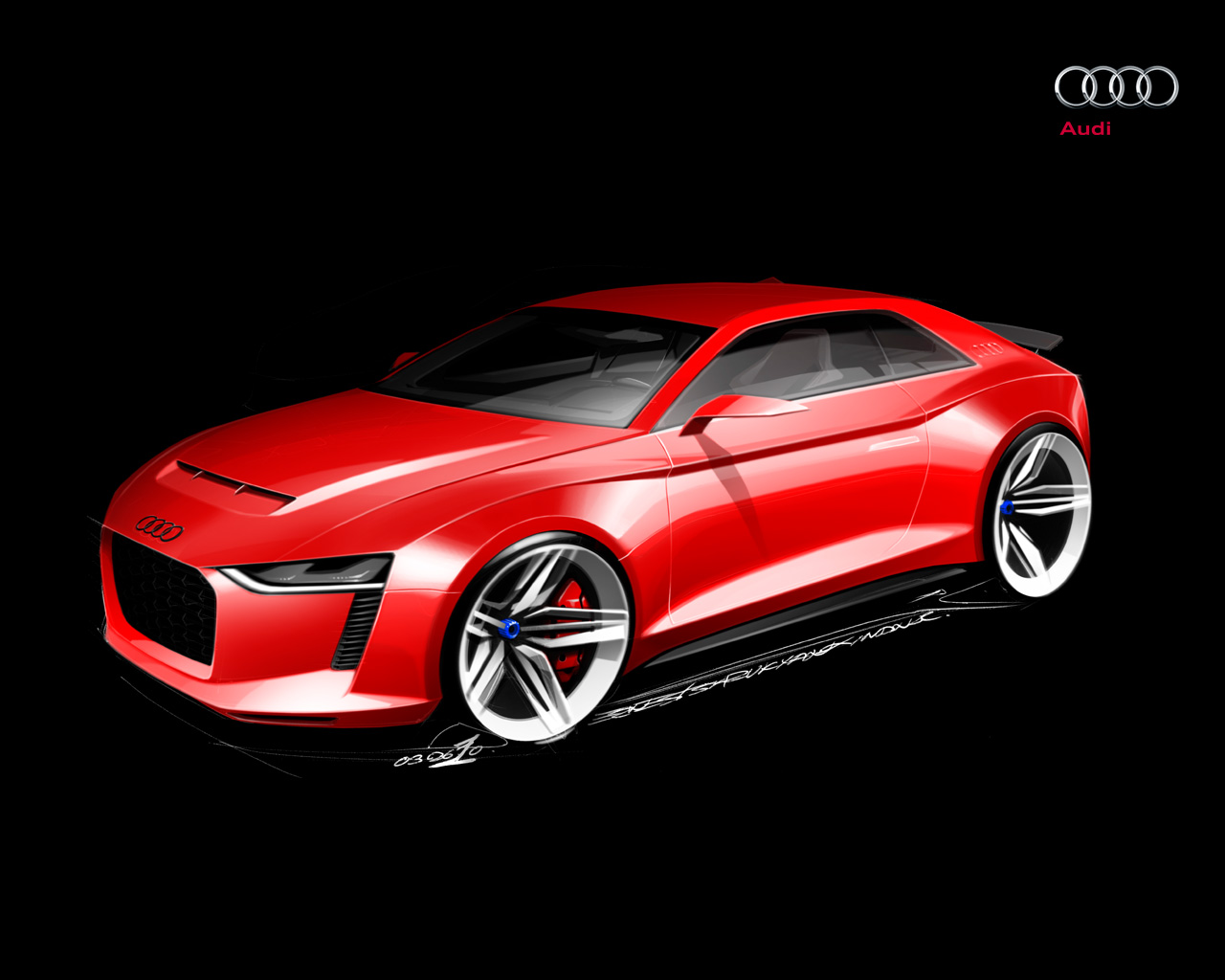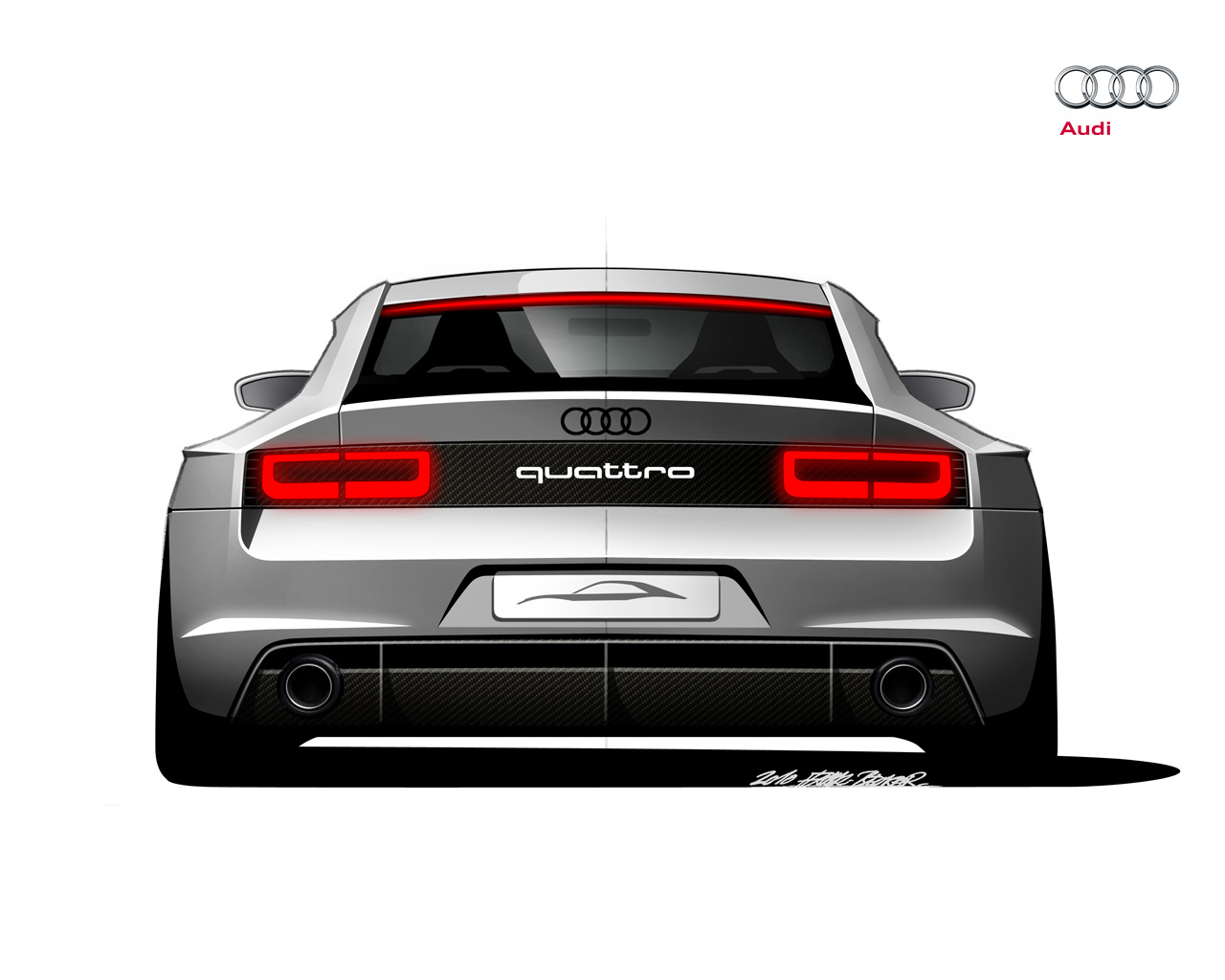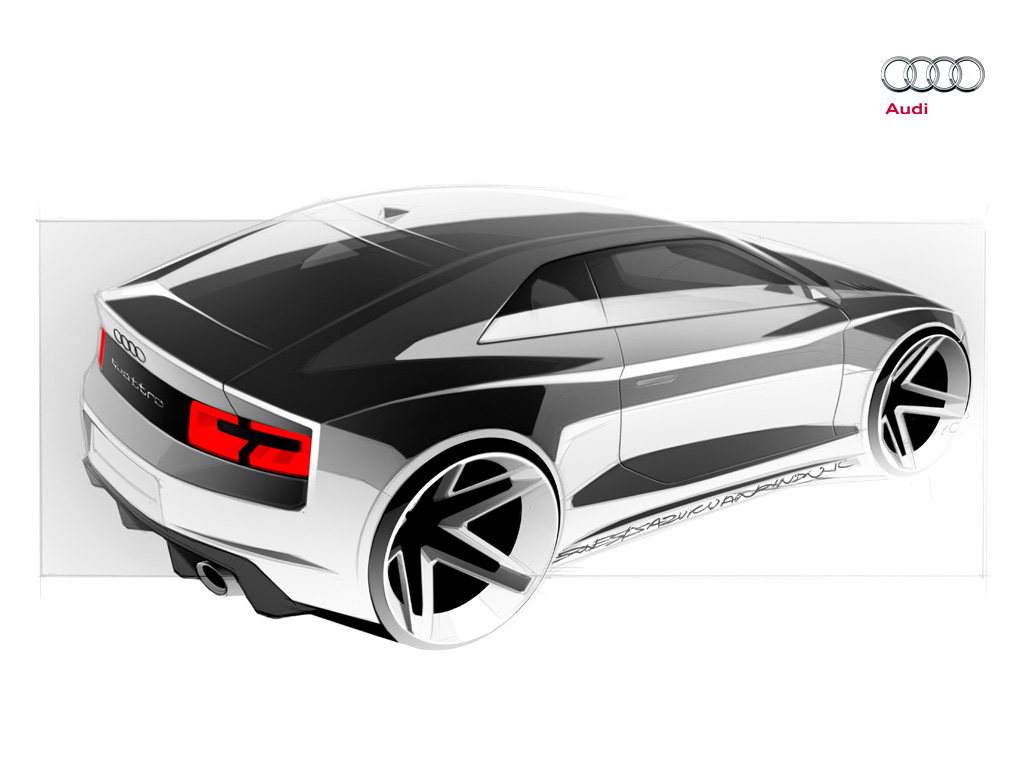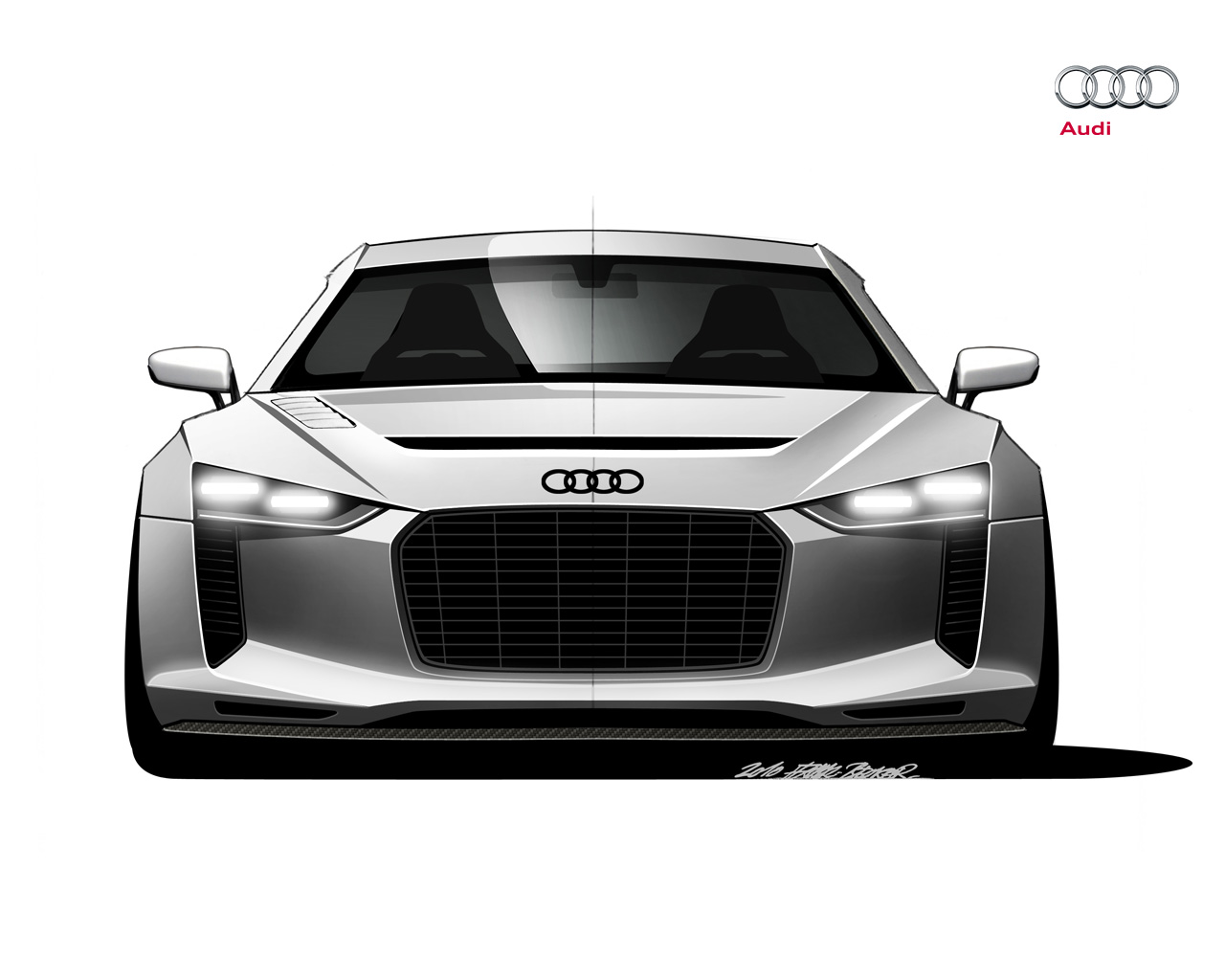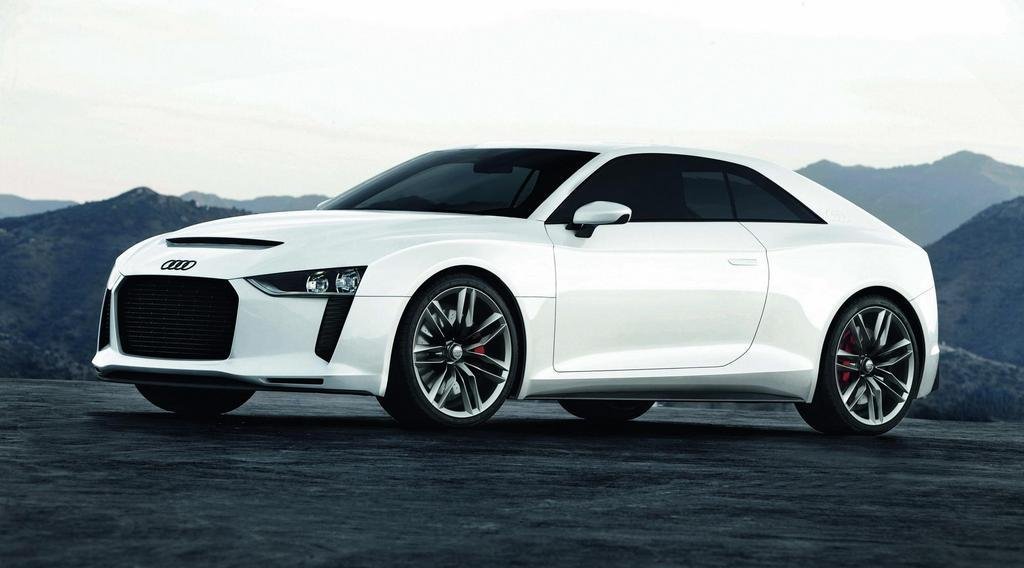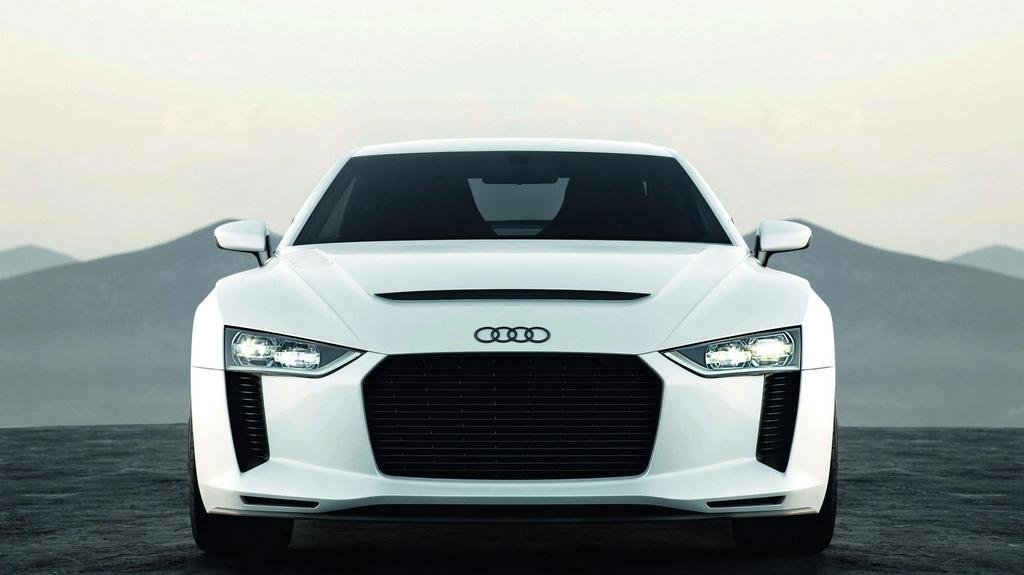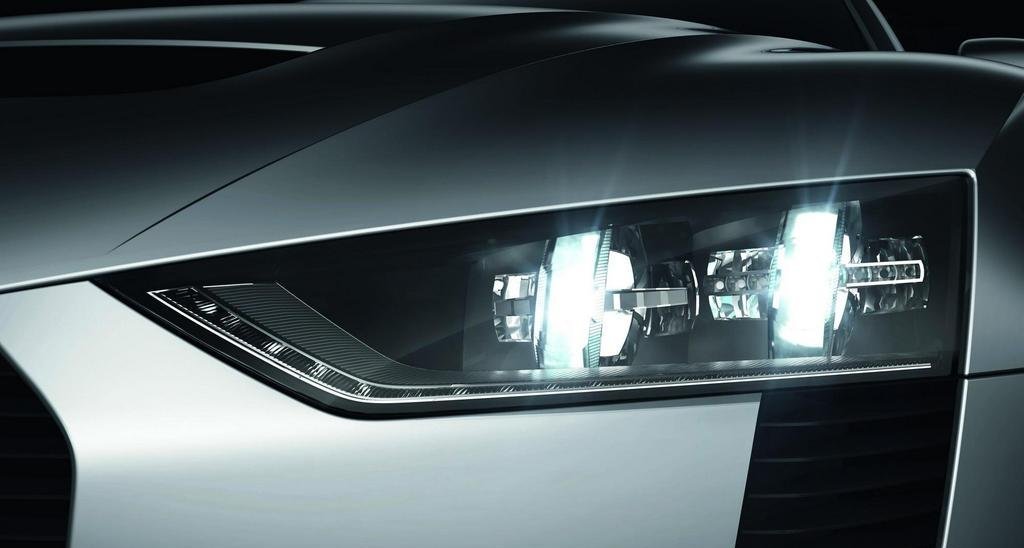Compact and powerful: The appearance of the Audi quattro concept makes no secret of its potential. Although the genes of the elegant Audi A5 and RS 5 Coupes are impossible to overlook, the appearance of the show car is far more aggressive and extroverted. Even the obvious differences between the base model and the evolution are more dramatic than between the Ur-quattro and the Sport quattro in 1984.
The concept car’s wheelbase is 150 millimeters (5.91 in) shorter than that of the RS 5. The primary reason for this, of course, was to enhance agility and reduce weight – form follows function. In contrast to Sport quattro, the Audi designers also shortened the rear overhang by a total of 200 millimeters (7.87 in) to maintain the harmony of the basic proportions. Roof height was reduced by 40 millimeters (1.57 in) for this same reason.
With its exterior dimensions, the Audi quattro concept fits neatly into the sports car segment.
The low roof also reduces the height of the greenhouse and thus lowers the vehicle’s visual center of gravity. The muscular C-pillar is clearly an homage to the design of the Ur-quattro. As with that model, the trademark four rings can be found at the transition to the side of the vehicle, but in this case they are stamped into the sheet metal. Together with the large center-locking, 20-inch wheels in a 7-twin-spoke design, the lines make for extremely dynamic and powerful proportions when viewed from the side.
The wheel wells in the arched fenders are prominently flared – another quote from the design language of the Sport quattro. The same applies to the distinctive air outlet on the right side of the hood, which allows the five-cylinder engine to breathe more freely.
A significant feature of the front end is the stark single-frame grille. The elimination of the chrome frame lends it a functional and technical character. Large, upright air intakes at the corners of the bumper underscore the performance of the power plant.
The top of the grille merges into the flat strips of the headlight modules with their clear glass covers. All light units use ultra-efficient LED technology. The LED elements change their appearance between a horizontal and a vertical arrangement and thus change the character of the front end of the vehicle depending on the lighting function activated.
The strongly molded front skirt includes integrated carbon elements. This lightweight, yet extremely strong material is also used for the rear hatch and the hood, which are unpainted on the inside in order to use the visual quality of the material as a design element. The large spoiler integrated into the rear hatch is also made of carbon and extends automatically as needed and can be adjusted for maximum downforce.
